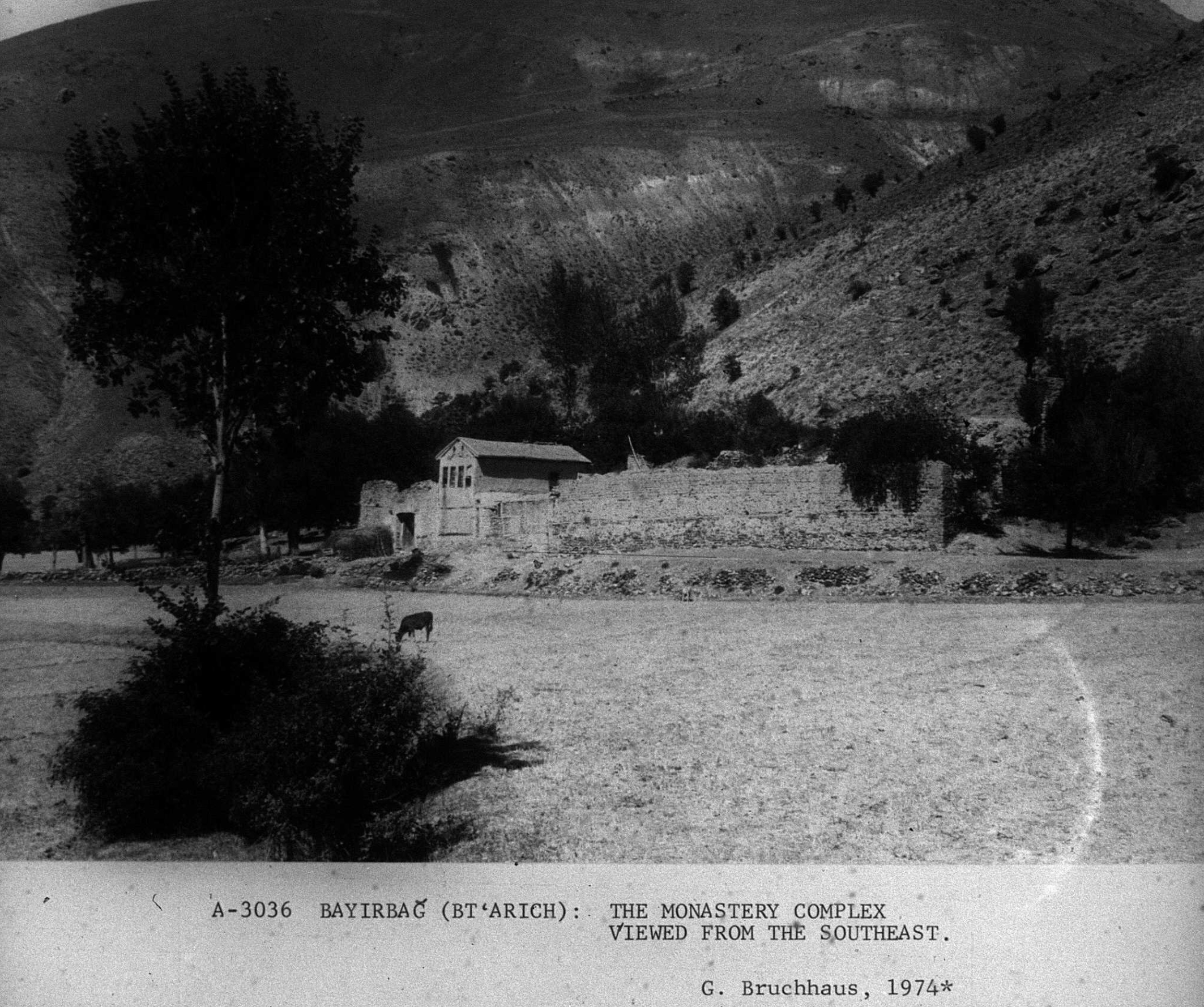
“I smell cigarette smoke,” one of my travel companions noted. That was the moment I knew that we should not linger any longer. We had been warned twice on the way up the hillside not to come here.
In one instance, it was claimed that two treasure hunters had been arrested by the police a week or two earlier. In the other case, we were told that if the military or police caught us there, we would be arrested. Such is the experience of interrupting the destruction of Armenian cultural sites in Turkey.
There are few photographs of the monastery of Sp. Nigoghos outside the previously Armenian village of Ptarij in the Erzinga region. There is no information about its founding, but it has existed since at least the 16th century. It was described as having a large circuit wall made of mud bricks and a bell tower above the main entrance (according to the microfiche collection of the Research on Armenian Architecture). The altars were covered with reliefs, with flower motifs painted in a natural color.
When we initially arrived at the location, I immediately detected that people were living there. Another of my companions thought that no one could live there because of the conditions. But I reiterated that there was indeed someone living or spending significant time there, even though we could not see anyone immediately present. We yelled greetings and knocked on the metal door, but to no avail. The door was slightly ajar, and I opened it to see two jackets hanging, one of which was military fatigues, and significant trash all around.
But the most startling thing was the massive hole that was dug at one end. I have seen evidence of the destruction caused by treasure hunters many times at Armenian churches throughout Turkey, but never with a hole so deep.
Unfortunately, the circumstances and safety of our small group did not allow for a more detailed inspection of the ruins. We took whatever photographs we could in the short time we had and moved on.
For all the talk of reconciliation and living in peace with our neighbors, the reality is that Armenian heritage is purposefully and systematically destroyed on any historically Armenian land that comes under the control of Turkey or Azerbaijan.
For all the talk of reconciliation and living in peace with our neighbors, the reality is that Armenian heritage is purposefully and systematically destroyed on any historically Armenian land that comes under the control of Turkey or Azerbaijan. The pattern has been repeated now for centuries — first destroy the Armenians, and then erase any evidence they ever lived there. The world organizations set up specifically to prohibit such destruction from happening are silent, or worse, complicit in the erasure of Armenian heritage.
Prejudice, discrimination and destruction — is it any wonder most Armenians doubt that anything positive will come from the rapprochement efforts of the Pashinyan regime with Turkey and Azerbaijan? The security of Armenian life and preservation of Armenian cultural sites will not follow any successful rapprochement, but instead must be a prerequisite.
When we advocate for justice for the 145,000 Armenians of Artsakh, the 2.3 million Armenians of the Ottoman Empire, their confiscated wealth and destroyed cultural heritage, it is not about seeking vengeance. It is about building a future on a solid foundation.
*Photo reference: Armenian architecture: a documented photo-archival collection on microfiche for the study of Armenian architecture of Transcaucasia and the Near- and Middle-East, from the medieval period onwards, by V. L. Parsegian, André Grabar, Armenian Educational Council (U.S.), RAA (Organization), Rensselaer Polytechnic Institute School of Architecture, Rheinisch-Westfälische Technische Hochschule, volume 6 microfiche 100.


Be the first to comment